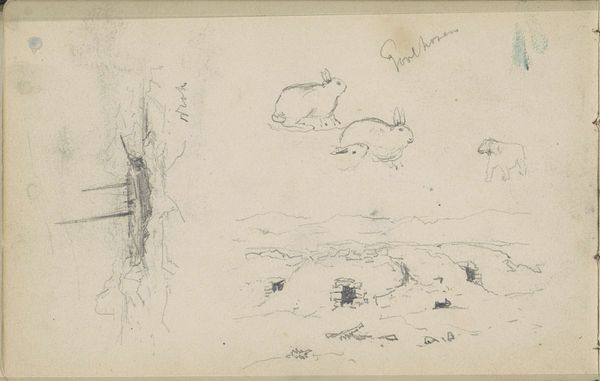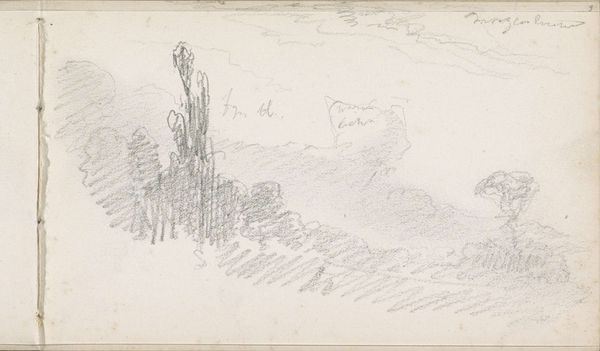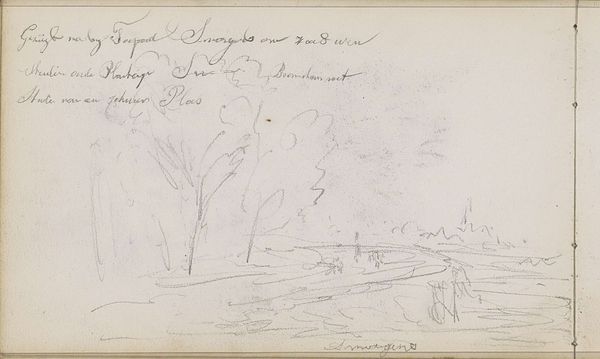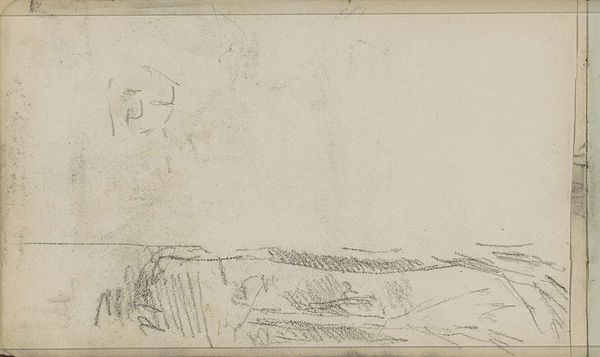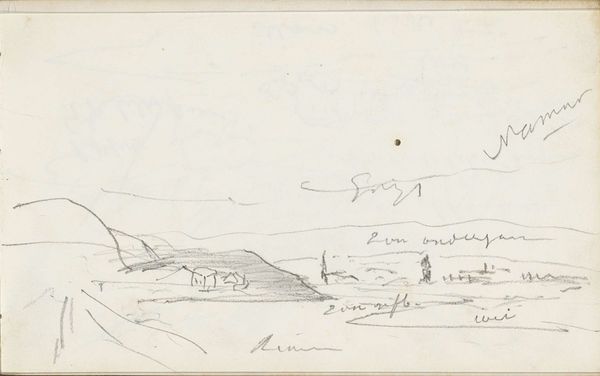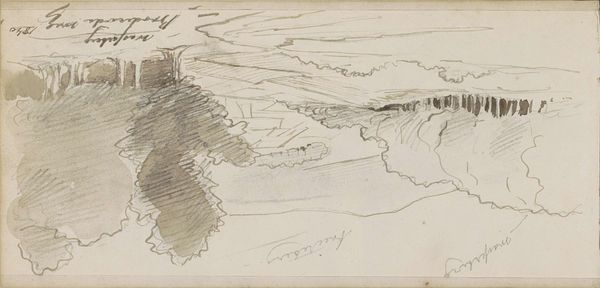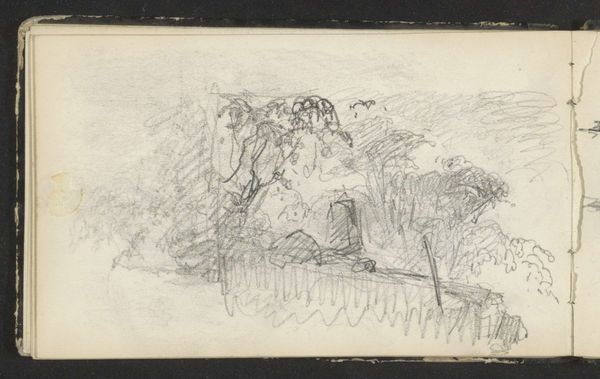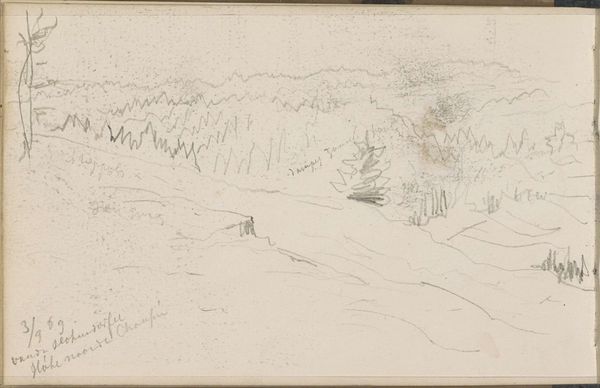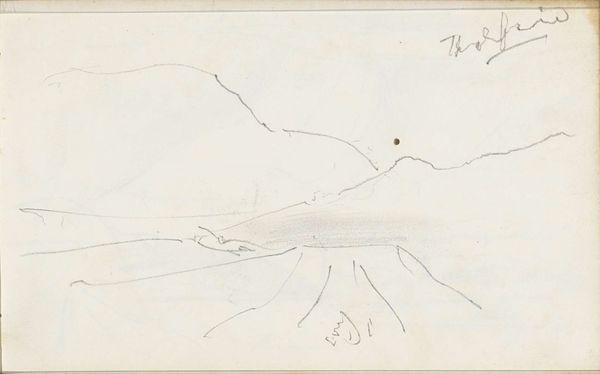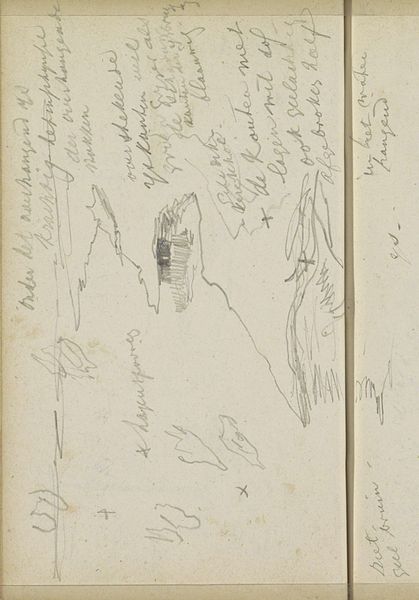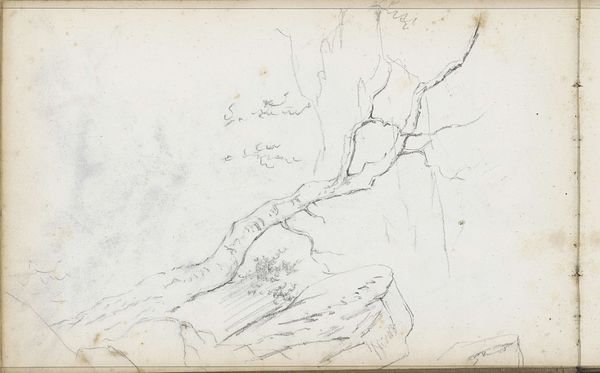
drawing, pencil
#
drawing
#
amateur sketch
#
light pencil work
#
quirky sketch
#
landscape
#
personal sketchbook
#
rock
#
idea generation sketch
#
sketchwork
#
ink drawing experimentation
#
romanticism
#
pencil
#
sketchbook drawing
#
sketchbook art
#
initial sketch
Copyright: Rijks Museum: Open Domain
Johannes Tavenraat made this pencil drawing of a house by a rock on the banks of the Maas. This seemingly simple sketch offers a glimpse into the artistic practices of 19th-century Dutch landscape painters. During this time, artists often ventured outdoors to capture the essence of the Dutch countryside, which was still a novelty in art. The very act of sketching en plein air, directly from nature, was a progressive move away from the formal constraints of academic painting. Tavenraat's sketch, with its emphasis on light, atmosphere, and topographical study, reflects the growing importance of landscape painting as a genre of national pride. The Netherlands was developing its own identity in the aftermath of French occupation. To truly understand this work, we might consult artists’ journals and travel guides from the period to learn about the popular painting locations and the cultural significance of landscape in shaping Dutch identity. This artwork serves as a reminder that art is always embedded in a specific social, cultural, and institutional context.
Comments
No comments
Be the first to comment and join the conversation on the ultimate creative platform.


